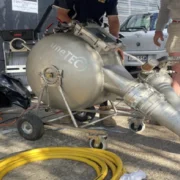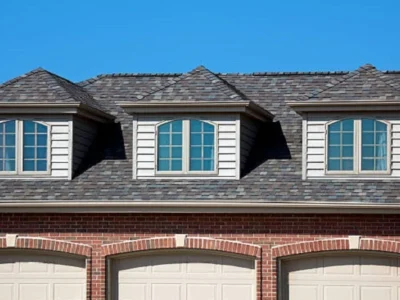Key Takeaways
- Understanding different types of furnaces is crucial for an informed decision.
- Energy efficiency, size, and cost are all critical factors that should be considered.
- Installing and maintaining your furnace correctly can significantly increase its lifespan.
Types of Furnaces
When facing the prospect of a furnace replacement, it’s crucial to know about the various types available on the market. The most common types include natural gas, oil, electric, and propane furnaces, each with unique benefits and drawbacks. Natural gas furnaces are favored for their superior efficiency and lower operating costs, frequently proving to be the most cost-effective option in the long run. While typically more costly to install, oil furnaces offer powerful heating capabilities that can be advantageous in frigid climates.
On the flip side, electric furnaces are known for their easy installation and low maintenance needs. While electricity rates may result in higher operational costs, they are commonly suitable for households that do not have gas lines already installed. In locations without access to natural gas, propane furnaces are a great option, providing comparable efficiency and cost advantages. By comprehending these options, homeowners can make a well-informed choice that meets their individual needs and climate conditions.
Energy Efficiency Ratings
One of the most critical factors when selecting a new furnace is its energy efficiency rating. High Annual Fuel Utilization Efficiency (AFUE) ratings signify a furnace that converts more fuel into heat, reducing wasted energy and lowering utility bills. While the initial price tag on high-efficiency furnaces may be steeper, the long-term savings on energy costs can be substantial. According to Energy.gov, upgrading to a high-efficiency furnace can result in considerable financial savings over time, making it a more environmentally friendly and financially prudent choice.
Energy efficiency isn’t just about the AFUE rating, though. Other factors, such as proper insulation and the condition of ductwork, also significantly affect how efficiently a furnace operates. Therefore, while selecting an energy-efficient model is critical, ensuring your home is adequately prepared to retain the generated heat is equally important. This holistic approach to energy efficiency can amplify your savings and improve your home’s overall comfort.
Sizing Your Furnace
Ensuring that your furnace is correctly sized for your home is crucial for maximizing its efficiency and lifespan. A furnace that is not big enough will have difficulty warming your area effectively, resulting in continuous use and increased energy costs. On the other hand, if the furnace is too big, it will warm up your house too fast, causing frequent on-and-off cycles. This repeated starting and stopping results in energy wastage and extra strain on the unit, which could shorten its lifespan.
This computation considers various aspects, such as the size of your house, the quantity and kind of windows, the insulation quality, and the climate in your area. Professionals are advised to seek assistance in conducting this assessment. They offer a precise evaluation and suggest a furnace that effectively addresses your heating requirements.
Cost Considerations
The cost of a furnace replacement in Tacoma involves multiple components, including the price of the unit itself, installation fees, and potential modifications to your home’s existing HVAC system. While high-efficiency models tend to have higher upfront costs, they usually offer significant savings on energy bills, making them a worthwhile investment over time. Additionally, many manufacturers and government programs offer rebates, tax incentives, or financing options to help offset the initial expense.
It’s also important to consider the long-term costs associated with your new furnace. This includes the energy bills, maintenance, and potential repair costs. Opting for a high-quality, reliable model may save you money in the long run, even if it means a slightly higher initial investment. When planning for a furnace replacement, taking a long-term view can ensure that you make the most financially sensible and practical choice.
The Installation Process
Correct installation is crucial for ensuring your new furnace operates efficiently and lasts long. The usual installation procedure includes multiple vital stages, beginning with the safe removal and appropriate disposal of the old unit as per local laws. Next, the installer will assess your existing ductwork and make any necessary adjustments to ensure optimal airflow. This is followed by positioning and installing the new furnace, connecting it to fuel and electrical lines, and performing detailed tests to ensure everything operates efficiently and safely.
Hiring a qualified professional for this process is highly recommended.
Improper installation may lead to significant issues like reduced efficiency, increased energy expenses, and potential safety hazards like gas leaks or electrical fires. A skilled installer not only has the technical know-how to finish the job correctly but also has the experience to manage any unforeseen challenges that may come up during the installation.
Maintenance Tips
Consistent maintenance can significantly prolong your furnace’s lifespan and maintain its efficiency. Essential maintenance includes changing or cleaning air filters every one to three months, monitoring thermostat settings, and arranging yearly professional inspections. These professional inspections can catch minor issues before they escalate into costly repairs, ensuring uninterrupted comfort in your home throughout the colder months.
Other essential maintenance steps include:
- Make sure there is nothing in the way around your heater.
- Ensuring vents and ducts are unobstructed.
- Monitoring your system for unusual sounds or smells that could indicate a problem.
By staying vigilant and proactive with your maintenance, you can prevent many common issues and keep your furnace running smoothly for years.
Choosing a Professional Installer
When installing or replacing a furnace, choosing the right professional is essential for ensuring quality and safety. Look for licensed and insured contractors with a strong reputation for quality work. Feedback from clients and personal recommendations can offer helpful information about the trustworthiness and expertise of prospective installers. Additionally, a seasoned installer can provide valuable suggestions on the most effective maintenance routines to extend the life of your new furnace. Another crucial factor to consider when selecting a professional installer is their knowledge of the specific type of installed furnace.
Pedrovazpaulo Coaching: Mastering the Art of Leadership









Comments